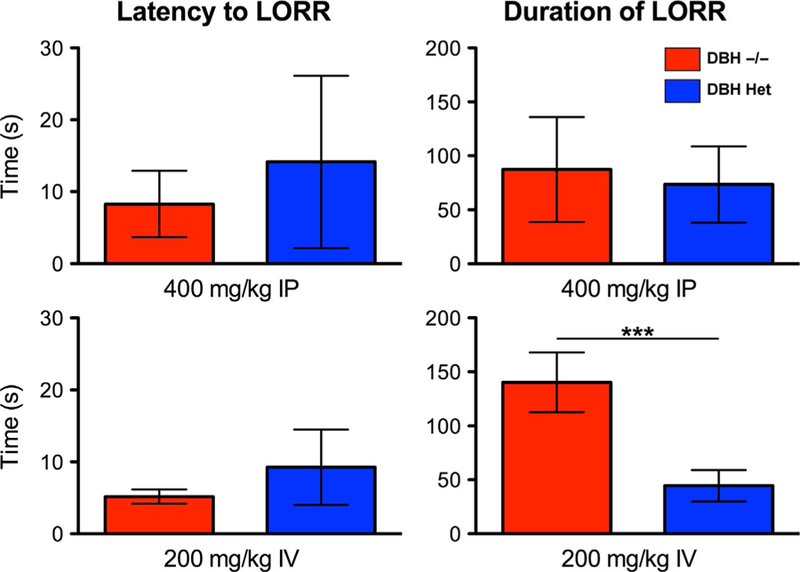Fig. 1.

Route of drug administration plays an integral role in the apparent anesthetic efficacy. When delivered intraperitoneally (IP), dexmedetomidine produces a statistically indistinguishable (mean ± SD) latency to loss of righting (top left) and duration of loss of righting (top right) in dopamine β hydroxylase (DβH) knockout mice that are devoid of both epinephrine and norepinephrine (n=10) and DβH heterozygous control mice that retain a single wild-type allele and consequently have normal levels of adrenergic ligands (n=11). However, when dexmedetomidine is given intravenously to DβH knockout mice and heterozygous control mice, knockouts show a significant dose-dependent increase both the latency and duration of loss of righting. Shown in the lower panel are data from an equipotent intravenous dose of 200mcg/kg (n=5–6/group) in which knockouts show a significantly longer duration of loss of righting. ***P < 0.001. From Hu, F. Y., Hanna, G. M., Han, W., Mardini, F., Thomas, S. A., Wyner, A. J., et al. (2012). Hypnotic hypersensitivity to volatile anesthetics and dexmedetomidine in dopamine beta-hydroxylase knockout mice. Anesthesiology, 117(5), 1006–1017.
